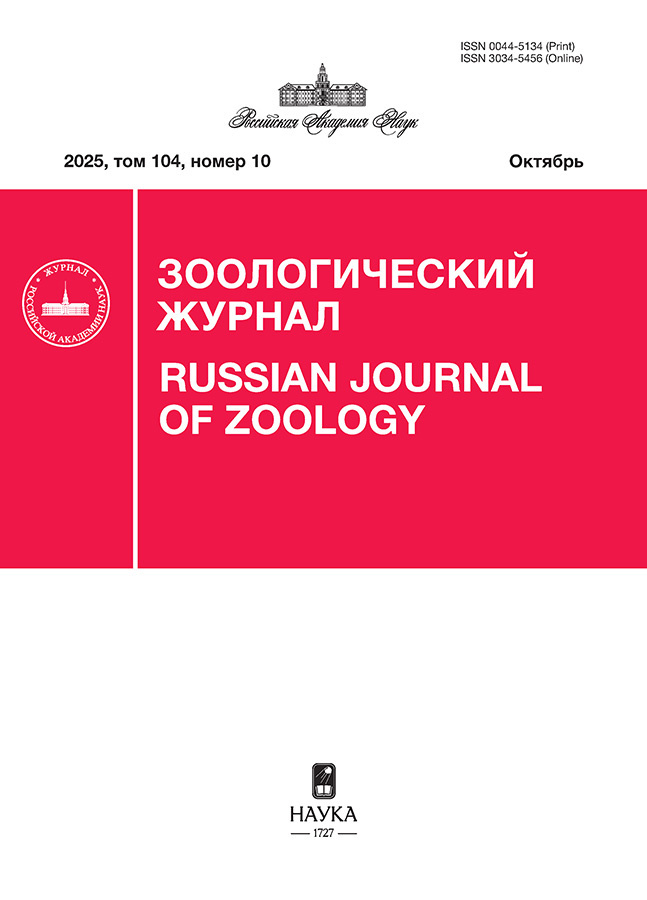Skin and hair of the Tibetan Hamster (Urocricetus kamensis, Cricetidae, Rodentia): A comparative morphological analysis
- Authors: Chernova О.F.1, Feoktistova N.Y.1, Soldatova I.B.1, Surov А.V.1
-
Affiliations:
- Severtsov Institute of Ecology and Evolution, Russian Academy of Sciences
- Issue: Vol 103, No 5 (2024)
- Pages: 85-99
- Section: ARTICLES
- URL: https://rjdentistry.com/0044-5134/article/view/654287
- DOI: https://doi.org/10.31857/S0044513424050098
- EDN: https://elibrary.ru/urfilu
- ID: 654287
Cite item
Abstract
For the first time, using light and scanning electron microscopy, the fine structure of the skin and its derivatives (glands, hairs, whiskers) was studied in adult male and female Tibetan hamsters (Urocricetus kamensis Satunin 1903), a unique species of the subfamily Cricetinae that lives only in the highlands of the Tibetan Plateau. A comparative morphological analysis of the skin, along with features of its similarity with the skin of other hamsters, revealed a number of characteristic features in the Tibetan hamster that contribute to the adaptation of this species to the harsh mountain climate conditions with sharp seasonal and daily temperature fluctuations: abundant subcutaneous fatty tissue, a special hair structure that provides effective heat protection due to a significant change in the volume of inert air in the fur: significant hair density, wavy arrangement of rows of hairs and the profile of the lower sections of the guard hairs. The presence of relatively long and thick guide hairs in the fur serves to protect the coat in rocky habitats. The array of specific skin glands is little compared to other Cricetinae; no mid-ventral and flank glands were found, this being unique for representatives of the subfamily, but this requires confirmation based on more abundant material.
Keywords
Full Text
About the authors
О. F. Chernova
Severtsov Institute of Ecology and Evolution, Russian Academy of Sciences
Author for correspondence.
Email: olga.chernova.moscow@gmail.com
Russian Federation, Moscow
N. Yu. Feoktistova
Severtsov Institute of Ecology and Evolution, Russian Academy of Sciences
Email: Feoktistovanyu@gmail.com
Russian Federation, Moscow
I. B. Soldatova
Severtsov Institute of Ecology and Evolution, Russian Academy of Sciences
Email: ira-soldatova@mail.ru
Russian Federation, Moscow
А. V. Surov
Severtsov Institute of Ecology and Evolution, Russian Academy of Sciences
Email: allocricetulus@gmail.com
Russian Federation, Moscow
References
- Млекопитающие фауны СССР, 1963. Ч. 1 / Под общим руководством И.И. Соколова. Москва-Ленинград: Издательство Академии наук. 482 с.
- Соколов В.Е., 1973. Кожный покров млекопитающих. М.: Наука. 487 с.
- Соколов В.Е., 1977. Систематика млекопитающих. Отряды: зайцеобразных, грызунов. М.: Издательство “Высшая школа”. 494 с.
- Соколов В.Е., Скурат Л.Н., Степанова Л.В., Шабадаш С.А., 1988. Руководство по изучению кожного покрова млекопитающих. М.: Наука. 280 с.
- Соколов В.Е., Чернова О.Ф., 2001. Кожные железы млекопитающих. М.: ГЕОС. 647 с.
- Суров А.В., Феоктистова Н.Ю., 2023. Обыкновенный хомяк. М.: Академия наук. 374 c.
- Феоктистова Н.Ю., 2008. Хомячки рода Phodopus. Систематика, филогеография, экология, физиология, химическая коммуникация. М.: Товарищество научных изданий КМК. 444 с.
- Феоктистова Н.Ю., Чернова О.Ф., 2008. Глава 7. Кожно-волосяной покров / Н.Ю. Феоктистова. Хомячки рода Phodopus. Систематика, филогеография, экология, физиология, химическая коммуникация. М.: Товарищество научных изданий КМК. С. 89–133.
- Церевитинов Б.Ф., 1951. Дифференцировка волосяного покрова пушных зверей // Вопросы товароведения пушно-мехового сырья. Труды Всесоюзного научно-исследовательского института охотничьего промысла. Вып. 10. С. 6–17.
- Чернова О.Ф., Куприянов В.П., Феоктистова Н.Ю., Суров А.В., 2021. Особенности строения кожи и ее дериватов у некоторых представителей подсемейства Cricetinae (Cricetidae, Rodentia): почему это важно знать // Зоологический журнал. Т. 100. № 11. С. 1288–1304.
- Чернова О.Ф., Хацаева Р.М., Куприянов В.П., Феоктистова Н.Ю., Суров А.В., 2022. Структурные особенности кожи, волос и специфических желез обыкновенного хомяка (Cricetus cricetus, Cricetidae, Rodentia) // Зоологический журнал. Т. 101. № 1. С. 101–116.
- Чернова О.Ф., Целикова Т.Н., 2004. Атлас волос млекопитающих (Тонкая структура остевых волос и игл в сканирующем электронном микроскопе). М.: Товарищество научных изданий КМК. 428 с.
- Chernova O.F., 2006. Evolutionary aspects of hair polymorphism // Biology Bulletin. V. 33. № 1. P. 43–52.
- Abràmoff M.D., Magalhães P.J., Ram S.J., 2004. Image processing with ImageJ // Biophotonics International. V. 11. № 7. P. 36–42.
- Danforth C.H., 1925. Hair in its relation to questions of homogeny and phylogeny // American Journal of Anatomy. V. 36. P. 47–68.
- Ding L., Liao J., 2019. Phylogeography of the Tibetan hamster Cricetulus kamensis in response to uplift and environmental change in the Qinghai – Tibet Plateau // Ecology and Evolution. V. 9. № 46. P. 7291– 7306.
- Fraser R.D.B., MacRae T.P., 1980. Keratins // Symposia of the Society for Experimental Biology. V. 34. P. 211– 246.
- Musser G.G., Carleton M.D., 2005. Superfamily Muroidea / In: D.E. Wilson, D.M. Reeder (Eds). Mammal Species of the World. A Taxonomic and Geographic Reference. 3-rd. edition. Baltimore: Johns Hopkins University Press. P. 894–1531.
- Hausmann L.A., 1930. Recent studies of hair structure relationships // Scientific Monthly. V. 30. P. 258–277.
- Hausmann L.A., 1944. Applied microscopy of hair // Scientific Monthly. V. 59. P. 195–202.
- Jiang Zh., Wang Y., Zhang E., et al., 2016. Red List of China’s Vertebrates // Biodiversity Science. V. 24. № 5. P. 500–551.
- Lebedev V.S., Bannikova A.A., Neumann K., et al., 2018. Molecular phylogenetics and taxonomy of dwarf hamsters Cricetulus Milne-Edwards, 1867 (Cricetidae, Rodentia): Description of a new genus and reinstatement of another // Zootaxa. № 4387. P. 331–339.
- Romanenko S.A., Lebedev V.S., Bannikova A.A., Pavlova S.V., 2021. Karyotypic and molecular evidence supports the endemic Tibetan hamsters as a separate divergent lineage of Cricetinae // Scientific Reports. V. 11. P. 10557.
- Swift J.A., 1999. Human hair cuticle: Biologically conspired to the owner’s advantage // Journal of Cosmetic Science.V. 50. P. 23–47.
- Smith A.T., Hoffmann R.S., 2008. Subfamily Cricetinae / In: A.T. Smith, Xie Yan (eds). A Guide to the Mammals of China. Princeton. Oxford: Princeton University Press. P. 239–247.
- Smith A.T., Xie Y., 2013. Mammals of China. Princeton, New Jersey: Princeton University Press. 400 p.
- Teerink B.J., 1991. Hair of West-European Mammals: Atlas and Identification key. Cambridge University Press. 224 p.
- Tóth M., 2017. Hair and Fur Atlas of Central European Mammals. Nagykovácsi, Hungary. Pars. Ltd. www. hairatlas.hu. https://doi.org/10.18655/hairatlas. 307 p.
Supplementary files
















